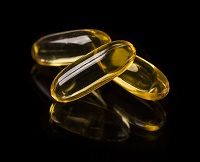Study: Vitamin D3 Modulates Gut-Liver Fat
High levels of vitamin D3 appear to induce weight gain in mice that were fed a high-fat diet, a research team found.

With obesity and associated metabloic disorders increasing in industrialized countries a team from Germany and the US looked into potential relationships between vitamin D3 status and non-alocholic fatty liver disease.
Reporting in an abstract due to be presented April 23 at the International Liver Congress in Vienna, Austria, Daniel Jahn of the division of hepatology, University Hospital Wurzburg, Wurzberg Germany, and colleagues there and James Fleet of Purdue University, West Lafayette, IN investigated the possible mechanisms at play.
It has already been shown that high vitamin D3 levels are correlated with high body mass index (BMI).
To explore the relationship between vitamin D3 status and non-alcoholic fatty liver disease, the team used animal models.
In the first set of experiments mice were given a high fat diet containing predominantly long-chain fatty acids and different levels of vitamin D3.
The team analyized the subjects' liver histology and hepatiac fat content.
That included the expression of metabolic and inflammatory target genes in liver and fat tissue.
To address tissu-specific effects of vitamin D 3, a second set of experiments was performed with vitamin D recetor-deficient mice and and vitamin-D receptor deficienct mice with an intestine-specific human vitamin D receptor transgene. The mice were fed a similar high fat diet.
The high levels of vitamin D 3 made the mice gain weight and fat mass, changes associated with unfavorable effecs in their fat tissue. Thosed included increase pro-inflammatory M1 macrophage markers an signs of increased adipolcyt apoptosis and reduced insulin signalling.
At the same time they showed increased immune activations and ER stress in the liver. But the mice without vitamin receptor capability did not gain weight.
"These data reveal a potential pro-adipogenic effect of VD3 in the applied high-fat diet model based on long-chain fatty acids, at least during early non-alcoholic fatty lier disease," they concluded.
That effect might be driven by "an unanticipated vole of vitamin D receptor in the regulatikon of intestinal lip metabolism," they said.
The work shows the importance of the gut-liver-adipose tissue axis in understanding the pathophysiology of obesity and fatty liver disease, they concluded.